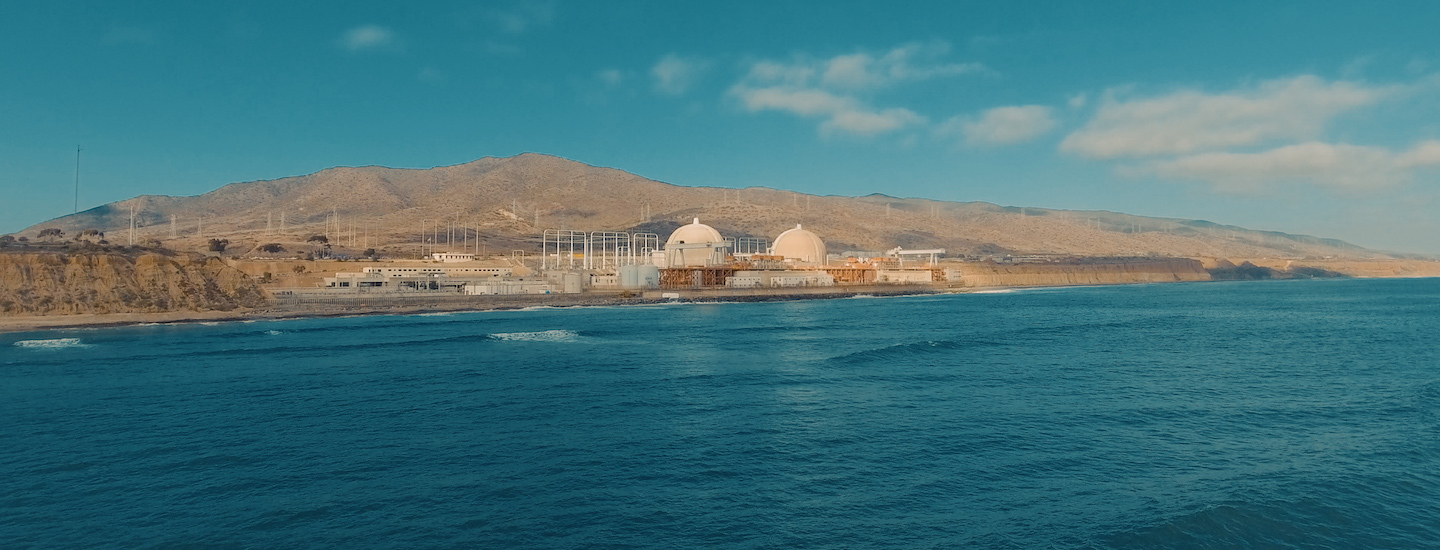
10.31.18
Nuclear Agency to Present Findings on "Near-Miss" Canister Incident at SONGS
By Surfrider FoundationImage by Swan Dive Media, 2018
On August 3, 2018, a canister loaded with spent nuclear fuel got caught on an inner ring while being loaded into an onsite, coastal dry storage structure at the San Onofre Nuclear Generating Station, and almost dropped 18 feet. This “near-miss” triggered an onsite inspection by a federal oversight agency, the Nuclear Regulatory Commission (NRC).
The NRC presented results of the investigation during an online webinar on Thursday, November 8.
The canister was being lowered into a steel cavity enclosure canister as part of the ongoing 1.5 to 2-year transfer of waste from cooling pools to dry storage (called an independent spent fuel installation, or ISFSI) at the recently decommissioned San Onofre Nuclear Generating Station (SONGS) in Southern California. An independent review by Union of Concerned Scientists determined that the drop wouldn’t have posed an immediate threat or risk to the public, but could have damaged the spent fuel rods contained inside the canister.
The NRC ordered the plant operator, Southern California Edison (SCE) to temporarily halt the spent fuel transfer process until the federal inspection was complete, the findings were made public, and new onsite safety protocols approved. No canisters have been loaded since this incident on August 3. Prior to that date, 29 out of 73 Holtec canisters had been loaded with spent fuel assemblies. The rest of the spent fuel (1,558 fuel assemblies) remain in crowded cooling pools.
A frustrating part of this incident, similar to previous incidents at SONGS (including the shim-pin debacle) is that SCE did not notify the public in a timely manner. In fact, SCE did not notify the public of this near-drop at all, until a whistleblower risked his job and came forward at a Community Engagement Panel meeting on August 9. Only then did SCE release a public statement regarding the incident. Additionally, preliminary reports on the NRC findings indicate chronic instances of inadequate training of SONGS employees and contractors.
The Surfrider Foundation agrees that dry storage canisters are a safer method of nuclear waste storage than crowded cooling pools, but only when the onsite storage facility is robust, and plant staff are adequately trained and equipped to safely handle the fuel. We look forward to hearing what the NRC has to say about the incident, the seemingly ongoing issues at SONGS, and what efforts SCE is going to make to truly ensure the safety of the neighboring communities, onsite workers, and nearshore environments.
The Surfrider Foundation is strongly opposed to permanent or long-term storage of radioactive waste at the deactivated San Onofre Nuclear Generating Station (SONGS) due to its proximity to the coastline, susceptibility to geological instability and location within a densely populated area. Surfrider recognizes the waste needs to be cooled onsite before it's moved and we demand that this is done as safely as possible, while also advocating the waste is moved as soon as possible to a permanent location away from the coast.
To learn more about Surfrider’s Campaign to Get Nuclear Waste off the Beach at San Onofre, check out our most recent blog: Seeking the Best Option, First. Please also have a look at Surfrider’s submitted comments regarding the plant’s decommissioning plan and Draft Environmental Impact Report.
Help us get the waste off the beach! Take action now to demand your federal reps get the waste off California’s coast and into safe, consent-based longer-term storage.
